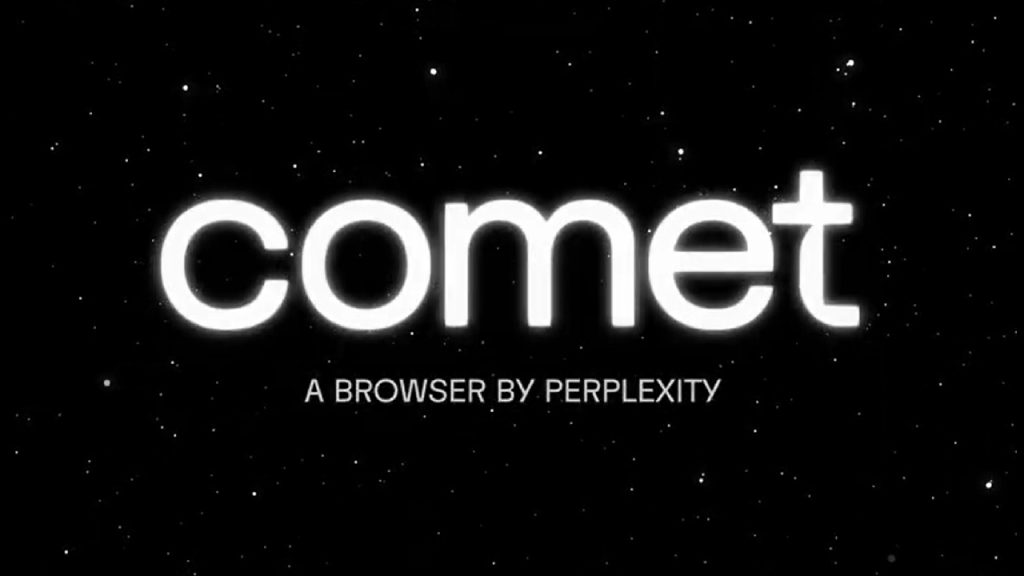Amidst ongoing antitrust trial potentially reshaping Google’s dominance, Perplexity AI is preparing its own challenge to the established browser order. The company is targeting a mid-May 2025 release for Comet, a web browser conceived with artificial intelligence at its core, aiming to offer a distinct approach focused on research and information synthesis.
Hints of the impending launch, including interface elements like a “Learn Comet” button and an introductory video, have begun appearing on Perplexity’s website, signaling the final stages before its public debut.
Built upon the same open-source Chromium project that underpins Google Chrome and Microsoft Edge, Comet seeks to differentiate itself through deep AI integration. Chromium provides the foundational code for rendering web pages and managing browser functions, allowing developers like Perplexity to focus on building unique features on top.
Perplexity CEO Aravind Srinivas confirmed the May launch timeline in a recent interview and elaborated on the vision, envisioning Comet facilitating multi-step research and complex browsing tasks powered by autonomous AI agents – software designed to understand user goals and execute tasks across different web services.
This aligns with the browser’s positioning, evident since its initial product announcement in February, as a tool to move beyond simple search queries towards more comprehensive, AI-assisted workflows.
At that time, Srinivas hinted Comet would emphasize “AI features like smarter Deep Research and basic agent workflows” and “core browsing improvements that Chrome hasn’t shipped for ages.”
AI Agents and the Browser’s Role
The strategy extends beyond merely adding an AI chatbot to a browser window. Reports suggest Comet is designed to access browsing history, contextual data, and potentially Google services to provide its tailored responses, effectively weaving AI into the fabric of web navigation. This approach aims to streamline tasks and potentially bypass limitations encountered by AI tools operating within sandboxed environments.
The goal appears to be a fluid experience blurring the lines between searching, browsing, and direct AI interaction, optimized for users undertaking detailed research. However, Srinivas also tempered expectations regarding agent capabilities back in March, cautioning that fully functional AI agents are complex and stating that “Anyone saying agents will work in 2025 should be skeptical.” Early descriptions pointed to features centered around deep research integration, real-time information processing with citations, and cross-platform synergy.
Monetization, Data, and User Control
Powering these advanced AI features requires data, which leads to questions about Comet’s business model. While positioned as a research tool, recent comments from Perplexity’s leadership have shed light on potential monetization strategies. In an April podcast interview, CEO Srinivas discussed the possibility of using data collected via Comet – potentially including activity outside Perplexity’s direct services – to build user profiles for targeted advertising, specifically mentioning ads within Perplexity’s Discover feed (a content stream separate from search results).
This revelation adds a layer to Comet’s purpose, suggesting data collection is a factor in developing a standalone browser. Following this, Srinivas clarified on social media and in interviews that user choice would be central, proposing hypothetical tiers allowing users to opt-out of memory/ads, have memory without ads, or allow memory usage for personalized ads in the Discover feed, framing it as a utility-versus-privacy trade-off managed by the user.
Initial reports also suggested the browser would include native ad blocking and privacy toggles, further emphasizing user control. Alongside these user-facing aspects, Perplexity has also signaled confidence in its operational capabilities; Chief Business Officer Dmitry Shevelenko testified during a recent Google antitrust hearing that he believed Perplexity could manage Chrome at its current scale if Google were forced to divest it.
Navigating a Market in Flux
Comet enters a dynamic field. Microsoft continues to enhance Edge with AI, Google’s I/O conference looms with potential AI announcements for its own products, and niche players like “thebrowsercompany” are testing other AI-centric browsers such as Dia.
The most significant factor, however, remains the US v. Google remedies trial. The DOJ’s push to potentially force a Chrome sale creates considerable uncertainty for the market leader, with DOJ lawyer David Dahlquist stating the government aims to “allow that block of ice to thaw.” Google is fiercely resisting, with lead counsel John Schmidtlein calling the DOJ demands “extreme” and “fundamentally flawed,” arguing they are “untethered from the liability findings.”
Google CEO Sundar Pichai testified that proposed remedies like data sharing felt like a “de facto divestiture of search” and could make continued investment difficult. This backdrop of regulatory pressure provides a unique, if unstable, environment for a new competitor. Other AI players are also watching; OpenAI executive Nick Turley testified his company would consider acquiring Chrome if mandated, viewing it as a potential “onramp” for AI tools, following earlier reports that OpenAI was exploring its own browser.
Perplexity, meanwhile, continues to secure its place, notably through its partnership with Motorola to pre-install its AI assistant, a deal highlighted during the Google trial. Still, gaining substantial market share against entrenched incumbents like Chrome, Edge, and Safari presents a formidable challenge for any new browser entrant.

